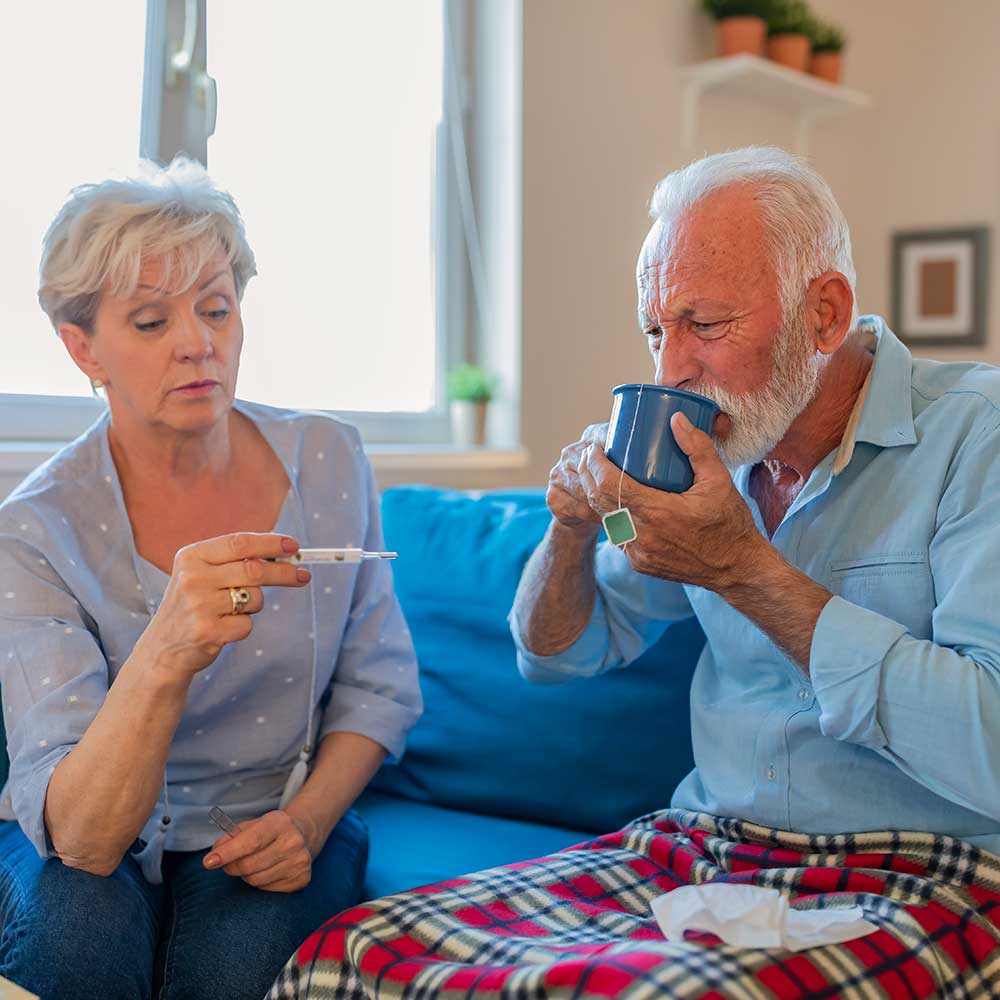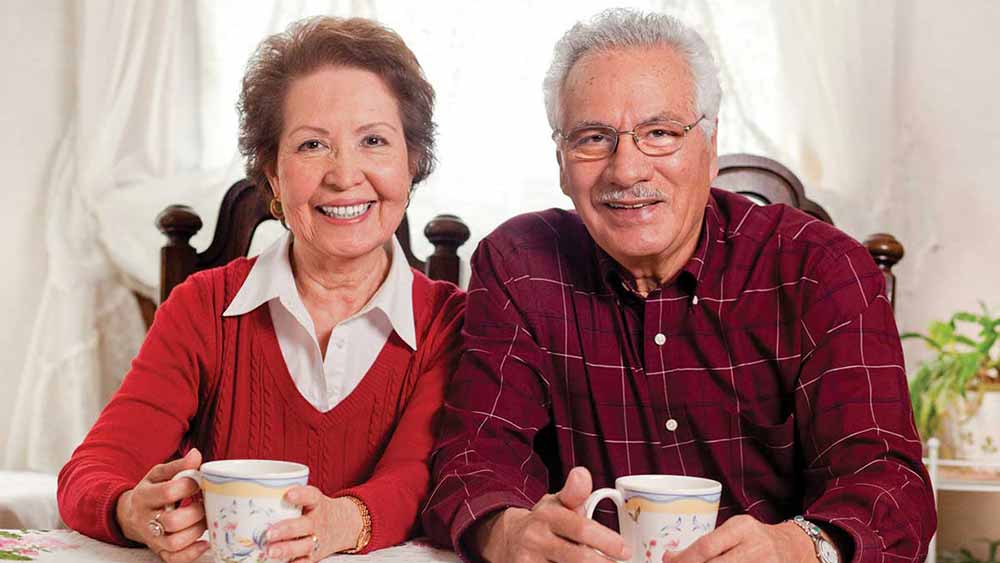

Respiratory Infections in Older Adults
Most people are aware of the disproportionate impact of COVID-19 on older adults. While people of every age have been affected by the virus, statistics show that 75% of deaths have occurred in people aged 65 and older.
This is a typical pattern with almost all respiratory infections. Among younger people, most respiratory infections cause mild illness that might cause a person to spend a few uncomfortable days and miss a few days of work or school. But the symptoms can be more serious, even life-threatening, for seniors. Respiratory infections are responsible for a large percentage of hospitalizations among older adults, and each year, more than 1 million older adults die from the effects of respiratory tract infections. These illnesses rob seniors of their mobility, strength and ability to complete daily tasks.
Many viruses and bacteria can cause respiratory infections. Here are some of the most common:
Bacterial pneumonia is caused by a number of different strains of bacteria. It causes inflammation and fluid accumulation in the lungs, often with fever and chest pain. Confusion is a common symptom in older adults. Pneumonia is treated with antibiotics and medications to relieve symptoms. Hospitalization is sometimes necessary.
Seasonal influenza —“the flu”—is especially dangerous for older adults. Older adults make up more than 90% of deaths caused by influenza. Common symptoms include headache, fever, chills, muscle aches, cough and sore throat. Some older adults also may have digestive symptoms. The flu can be treated with antiviral medications, which are most effective if started at the onset of illness.
“The common cold” can result from infection by many different viruses. All of these can be more serious for older adults. The most common culprits of colds are the human rhinoviruses (HRV). Others include human metapneumovirus (HMPV), adenoviruses and enteroviruses. Most of us know the symptoms of a cold because we’ve had several during our lives—sore throat, runny nose and sneezing, sometimes similar to the flu, but usually milder. There is no remedy for a cold, but supportive self-care includes getting extra rest and drinking plenty of fluids. The doctor may recommend medications to lessen symptoms.
Respiratory syncytial virus (RSV) usually causes mild, cold-like symptoms. It is most common among children, but also causes many hospitalizations and deaths in older adults. RSV can progress to pneumonia and complications of the heart and lungs. Older adults may need oxygen or intubation.
Coronaviruses are the family of viruses that include COVID-19 and several other respiratory viruses. Typical symptoms include fever, cough and fatigue. Among older adults, the most noticeable symptoms might include confusion and difficulty breathing.
People aged 65 and older are at higher risk of serious complications.
As we grow older, our immune systems are less able to fight against germs. Weaker bones and muscles, as well as changes to the nervous system, may impair breathing and make coughing less productive.
The presence of underlying health conditions, such as diabetes, heart disease, lung disease, dementia and chronic kidney disease, also raises the risk of serious respiratory infections. Malnutrition, inactivity and smoking also are factors. Certain medications that are often prescribed for older adults can also raise the risk—as can the failure to take medications properly.

Diagnosis and treatment of respiratory infections
Doctors say pinpointing the cause of a respiratory illness in older adults can be tricky. The “typical” symptoms—for example, fever and congestion—may be absent in seniors, who might instead experience an unexplained fall or confusion.
An accurate diagnosis is key to beginning the appropriate treatment. The health care provider analyzes their patient’s condition, including testing secretions and blood work. Many times they include radiologic imaging, such as X-rays and CT scans.
Depending on the diagnosis, treatment might include antibiotic or antiviral medications, as well as medicines for symptomatic relief. Often a senior may be hospitalized and receive supplemental oxygen or require a breathing tube.
Five ways to lower the risk of respiratory infections
- Get your vaccines for COVID-19, seasonal influenza and pneumonia.
- Practice good hand hygiene by washing hands frequently and correctly.
- Wear a mask and ask others to do so, as well.
- Avoid being around others who appear ill or are ill.
- Clean and disinfect surfaces that people touch frequently.
Professional in-home care can help.
If an older adult is recovering at home from a respiratory infection, perhaps having been discharged from the hospital, in-home caregivers can help the senior follow the doctor’s orders, and support a better outcome by assisting with personal care and tasks around the home as the senior recovers their strength.
For all older adults, professional in-home caregivers can help lower the risk of respiratory infections. They can help prevent the spread of germs with housekeeping services and personal care assistance with bathing and toileting. Caregivers help clients avoid dangerous undernutrition by preparing healthy meals and snacks. Inactivity is another risk factor for seniors; caregivers provide support and encouragement as clients exercise to build endurance and a stronger immune system. Caregivers also can provide health reminders and transportation to health care appointments to help clients manage preexisting health conditions.
Right at Home caregivers are trained in infection control practices, and provide services that support both the physical and emotional health of senior clients. Contact your local Right at Home today and ask for a FREE in-home consultation.







